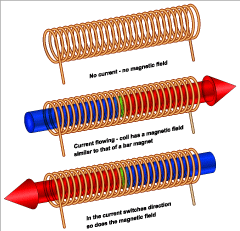 Solenoid is a generic term that refers to a coil of wire that’s used as an electromagnet. In other words, when a current is run through the coiled wire, the device creates a magnetic field which can then be used for many purposes.
Solenoid is a generic term that refers to a coil of wire that’s used as an electromagnet. In other words, when a current is run through the coiled wire, the device creates a magnetic field which can then be used for many purposes.
Unlike regular magnets, solenoids can be switched on and off, as well as strengthened or weakened based on the current that flows through them. That is what makes them useful in a wide variety of industries such as medical, electronic, automotive, and more. A few examples where solenoids are used would be locking mechanisms, MRI machines, and speakers.
Such applications can require an epoxy for winding the coils, impregnating or encapsulating the solenoid, or bonding the coils to another substrate. Master Bond offers a wide variety of adhesives and encapsulants for use in solenoids. Some important properties that these products offer are low viscosity (for potting) & high viscosity (for bonding), high strength, superior electrical insulation, thermal conductivity, resistance to a wide temperature range (including cryogenic serviceability), low outgassing, low shrinkage, and high dimensional stability.
A study from Brookhaven National Lab involving an electron recovery linac (linear accelerator), uses a solenoid made with a high temperature superconductor with the superconducting RF cavity. This study cites Master Bond EP37-3FLFAOND, “To this end the OD of each coil was sized to its yoke using a special thermally conductive epoxy (EP37-FLFAOND) that retains some flexibility at cryogenic temperatures.”1
1Gupta, Ramesh, Muratore, Joseph, Plate, Stephen, Sampso, William. “HTS Solenoid for Electron Recovery Linac”. https://www.bnl.gov/magnets/staff/gupta/talks/erl-hts-solenoid/ERL-HTS-S.... Accessed January 2020.
